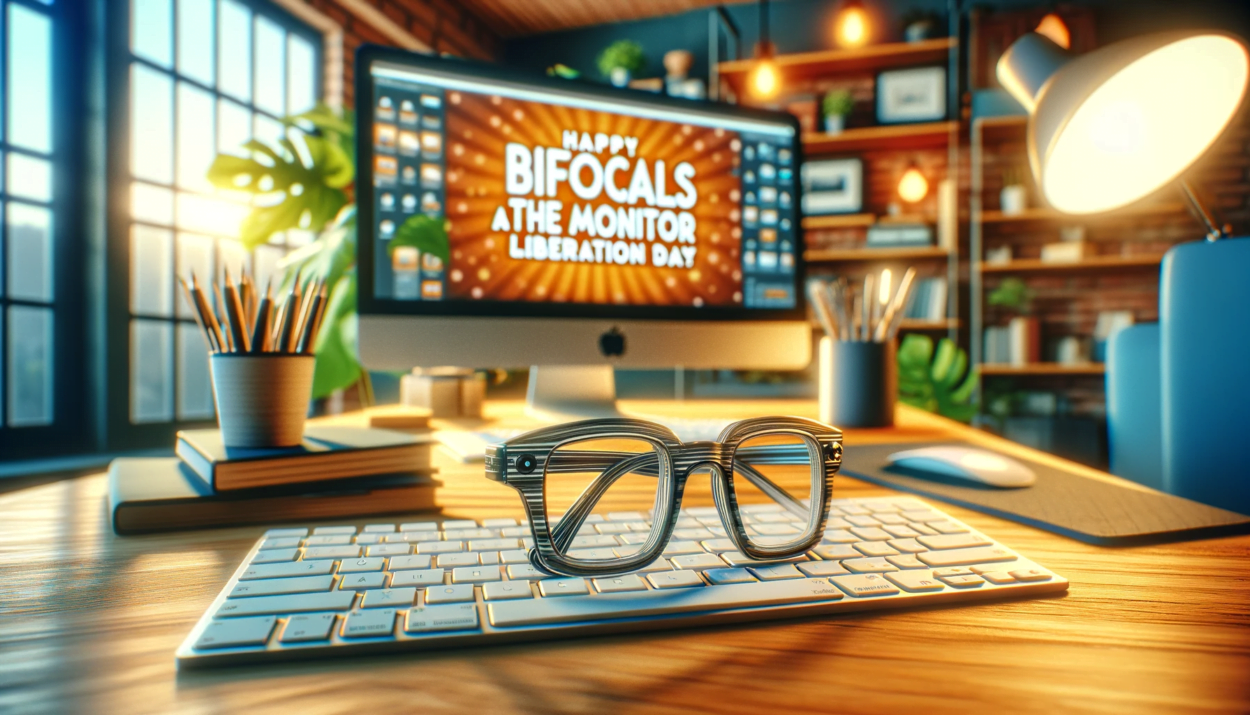Welcome to the world where eyewear meets digital convenience! ‘Bifocals at the Monitor Liberation Day’ isn’t just a celebration; it’s a revolution in how we view our screens and our lives. In this article, we dive into the history, significance, and fun facts about bifocals, and why this day is so essential for anyone who juggles between lenses and screens.
In Short
1. The Backstory of Bifocals
Tracing back to the 18th century, bifocals were a groundbreaking solution to a common problem. Benjamin Franklin, seeking an alternative to switching between different glasses, paved the way for bifocals. This segment delves into the early challenges and the innovative journey leading to the creation of bifocals.
2. Key Milestones: A Bifocal Timeline
The Birth of Bifocals (1784)
The journey begins with Benjamin Franklin, traditionally credited with the invention of bifocals around 1784. Frustrated with switching between two pairs of glasses, Franklin ingeniously combined lenses for near and far vision into a single frame, giving birth to the first bifocals.
Early Improvements (1800s)
Throughout the 19th century, bifocals underwent various improvements in design and materials. The introduction of steel frames and better-quality glass lenses made bifocals more durable and comfortable to wear.
Introduction of Seamless Bifocals (1908)
In 1908, Louis de Wecker introduced the first seamless bifocals. This innovation eliminated the visible line between the two lens sections, offering a more aesthetically pleasing and less distracting option for wearers.
The Era of Plastics (1940s)
The 1940s marked a significant shift with the introduction of plastic lenses. Lighter and less prone to shattering than glass, plastic lenses became a game-changer in eyewear technology, including bifocals.
Progressive Lenses Emerge (1959)
One of the most crucial developments came in 1959 with the invention of progressive lenses by Bernard Maitenaz. These lenses offered a gradual transition between different lens powers, eliminating the line and providing a more natural visual experience.
Digital and Customized Bifocals (2000s)
The 21st century ushered in digital lens technology, allowing for more precise and customized bifocals tailored to individual vision needs. This period also saw the integration of anti-reflective coatings and blue light filters, catering to the digital screen usage.
The Future: Smart Bifocals (2010s – Present)
The latest in bifocal innovation involves integrating technology such as smart lenses that can adjust focus electronically. These advancements are paving the way for a new era where bifocals not only correct vision but also enhance it in dynamic, digitally-driven environments.
This timeline encapsulates the significant milestones in the history of bifocals, illustrating how they’ve evolved from a simple necessity to sophisticated, technology-driven eyewear solutions. Each step in this journey highlights the continual innovation aimed at improving vision and comfort for bifocal wearers, reflecting the changing needs and technologies of the times.
3. The Importance of Bifocals Liberation Day
Bifocals Liberation Day, observed on the 1st of December 2023, is a celebration of the harmony between vision and technology. It’s a day to advocate for ergonomic practices that enhance eye health and to recognize the essential role bifocals play in improving the quality of life. This day underscores the importance of bifocals, especially in our digitally-driven world, where clear vision is paramount.
Conclusion
‘Bifocals at the Monitor Liberation Day,’ celebrated on December 1st, 2023, is more than a quirky holiday; it’s a tribute to our ever-evolving relationship with technology and how we adapt to stay in focus, both digitally and in life. As we commemorate this day, let’s raise our glasses (bifocals, of course) to clearer vision and the brighter days ahead!
